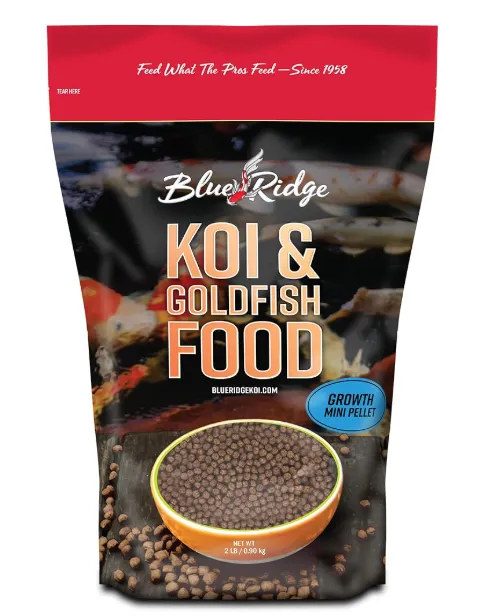

Introduction to Koi Fish How Big Do Koi Fish Get?
How Big Do Koi Fish Get?, Koi fish, a domesticated variety of the common carp (Cyprinus carpio), are celebrated for their elegance, vibrant colours, and serene movements. Originating in Japan over 1,000 years ago, they have become a symbol of peace, prosperity, and perseverance. Koi fish are now a staple in backyard ponds and ornamental gardens worldwide, adored not only for their aesthetic but also for their remarkable growth potential.
The Average Size of Koi Fish How Big Do Koi Fish Get?
On average, koi fish grow to be about 20 to 24 inches long (50 to 60 cm). However, their size varies based on numerous factors:
- Pond Koi: These typically reach lengths of 12 to 20 inches, depending on the environment.
- Show Koi: These high-quality, well-cared-for koi can grow to 36 inches or more.
- Wild Koi: Often larger than their pond-kept counterparts, wild koi thrive in open spaces, sometimes exceeding 40 inches.
What Factors Determine How Big Koi Grow? How Big Do Koi Fish Get?
Several variables influence the size of koi fish. Let’s break them down:
1. Genetics
Genetics play a critical role in determining a koi’s maximum growth potential. Some breeds, like Jumbo Koi, are selectively bred to achieve lengths of over 36 inches. Breeders prioritize traits such as body shape, colour vibrancy, and size when producing high-grade koi varieties.
2. Environment
Koi thrive in environments that mimic their natural habitats. Ample space, clean water, and proper aeration are essential for encouraging growth.
3. Diet and Nutrition
A protein-rich diet during their growing years, particularly in spring and summer, promotes rapid growth. Consider feeding them high-quality koi pellets, shrimp, earthworms, and leafy vegetables for balanced nutrition.
4. Water Quality
Clean, well-oxygenated water with low ammonia and nitrate levels ensures that koi remain healthy and grow steadily. Aim to maintain a pH level between 7.0 and 8.5 and conduct regular water tests.
5. Space and Pond Size
The size of your pond directly affects koi growth. As a general rule, allocate at least 500 gallons of water per koi for them to thrive. Overcrowding leads to stunted growth and increased stress.
How Fast Do Koi Fish Grow? How Big Do Koi Fish Get?
Koi grow quickly during their first few years, reaching 12 inches by their first birthday under optimal conditions. Their growth slows as they age, but with proper care, they can continue growing slightly throughout their lives, which span 20-30 years or more.
Largest Koi Fish Ever Recorded How Big Do Koi Fish Get?
The title of the largest koi fish ever recorded goes to a giant named Big Girl, measuring over 4 feet (1.2 meters) and weighing a staggering 90 pounds (40 kg). Such extraordinary sizes are rare but showcase the potential of well-cared-for koi.
Tips for Growing Jumbo Koi How Big Do Koi Fish Get?
- Provide Plenty of Space: A spacious pond encourages growth.
- Invest in High-Quality Food: Feed a mix of protein-rich and nutrient-dense options.
- Monitor Water Temperature: Maintain water temperatures between 15°C and 25°C for optimal metabolic activity.
- Regular Maintenance: Keep the pond clean and free from harmful toxins.
- Avoid Overcrowding: Space your koi to reduce competition for resources.
How to Measure Your Koi Fish Correctly How Big Do Koi Fish Get?
Measuring koi fish accurately is essential for monitoring their growth. Use a soft measuring tape and follow these steps:
- Place the koi in a shallow container with pond water.
- Gently measure from the tip of the nose to the tail fin’s end.
- Handle the fish carefully to reduce stress.
Common Myths About Koi Fish Size How Big Do Koi Fish Get?
- “Koi only grow as big as their pond.”
While environment matters, genetics heavily influence size. - “Feeding koi more makes them grow faster.”
Overfeeding can lead to health issues rather than increased growth. - “All koi grow to the same size.”
Size varies significantly among different breeds.
What Happens When Koi Outgrow Their Pond?
If koi outgrow their pond, their health may suffer due to increased stress, poor water quality, and a lack of oxygen. In such cases, upgrading to a larger pond or finding a suitable alternative is essential to their well-being.
Conclusion
Koi fish are incredible creatures capable of growing to impressive sizes when provided with the right conditions. Whether you’re aiming to raise show-quality koi or simply want a vibrant, healthy pond, understanding their needs is key. From genetics to environment, every factor plays a role in their growth journey.
FAQs
1. How big do koi grow in small ponds?
In smaller ponds, koi typically grow to 12-16 inches due to space constraints.
2. Can koi fish grow indefinitely?
No, koi have a genetic limit, but they grow throughout their lives, albeit slowly in later years.
3. What are the best foods for koi growth?
Protein-rich foods like shrimp, worms, and high-quality pellets promote healthy growth.
4. Do koi fish need companions?
Yes, koi are social and thrive in groups.
5. Can I keep koi in a tank instead of a pond?
While possible, a tank limits their growth and is not ideal for long-term care.
You may also like
- https://giobelkoicenter.com/koi-fish-garden/
- https://giobelkoicenter.com/koi-fish-tee/
- https://giobelkoicenter.com/koi-fish-flags/
- https://giobelkoicenter.com/how-many-koi-fish-is-lucky/
- https://giobelkoicenter.com/koi-pond-liners/
- https://giobelkoicenter.com/koi-fish-painting-easy/
Table of Contents
Passionate about fish keeping since elementary school in the 1980s, Giovanni Carlo has dedicated countless hours to collecting and breeding a diverse array of ornamental freshwater fish. From vibrant guppies and majestic koi to striking bettas and classic goldfish, he continues to explore the fascinating world of aquatics, sharing knowledge and enthusiasm with fellow fish enthusiasts.